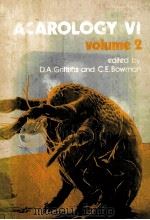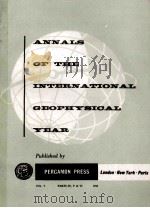《INTERNATIONAL ADJUDICATIONS VOLUME VI》
| 作者 | JOHN BASSETT MOORE 编者 |
|---|---|
| 出版 | OXFORD UNIVERSITY PRESS |
| 参考页数 | 418 |
| 出版时间 | 1933(求助前请核对) 目录预览 |
| ISBN号 | 无 — 求助条款 |
| PDF编号 | 813303428(仅供预览,未存储实际文件) |
| 求助格式 | 扫描PDF(若分多册发行,每次仅能受理1册) |
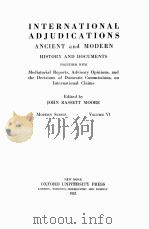
PART Ⅰ.—PROCEEDINGS AND AWARD3
Ⅰ.TREATY STIPULATIONS3
Ⅱ.ORIGIN OF THE DISPUTE6
Stipulation as to islands, 17836
The King-Hawkesbury convention8
Attitude of New Brunswick8
Ⅲ.PROVISION FOR A MIXED COMMISSION9
Arbitral stipulations, 18149
Appointment of commissioners10
Instructions of the British commissioner10
British commissioner’s doubts as to Grand Menan11
The Alexander grant11
Specific relation to present dispute15
Commissions of governors of Nova Scotia16
Ⅳ.PROCEEDINGS OF THE MIXED COMMISSION17
The journey to St.Andrews17
Organization of the commission17
American and British agents19
Secretary to the commission22
The governments’ claims22
Agreements as to evidence24
Adjournment to Boston26
Meeting at Boston26
Memorials and arguments26
Replies27
Agreement of the commissioners30
Adjournment to New York34
Ⅴ.THE AWARD35
Announcement of award to Congress37
Marking of the water boundary37
Ⅵ.EXPENSES OF THE COMMISSION37
PART Ⅱ.—THE ARGUMENTS47
1.THE CASE OF THE UNITED STATES47
PART Ⅰ47
The resort to arbitration47
Claim of United States48
Treaty of 1783; general clause and exception48
British claim based on exception; burden of proof49
Disputed islands not within exception49
St.Croix River Award (1798) decisive49
Island of Grand Menan50
Island of Campo Bello51
Moose Island51
Deer Island52
Dudley and Frederick islands52
St.Andrews Island52
Ship channels52
Disputed islands part of Massachusetts53
Charter of November 3, 162053
Patent from Council of Plymouth, 162754
Dissolution of Council of Plymouth, 163554
Historical inferences56
Projected union of twelve New England provinces56
Grant to Duke of York, 166458
Massachusetts charter, 169160
Territory of Sagadahock, and the islands65
Massachusetts and Nova Scotia69
British official acts supporting Massachusetts’ claim to the islands69
Fort Pemaquid73
Treaty of Utrecht, 171375
The Belcher-Dunbar controversy77
Grant of Mount Desert to Governor Bernard, 176279
The Hutchinson report, 176382
Position of Lords of Trade83
Grant of land to Bernard by Nova Scotia, 176585
Grant made under a mistake86
Bernard’s proclamation, 176889
Brattle-Bowdoin-Hubbard report, 177191
Letter of Governor Hancock, 178493
PART Ⅱ94
The limits of Nova Scotia94
The treaty of 178395
Nova Scotia a term of indefinite meaning97
The grant to Sir W.Alexander void ab initio98
Title by occupancy99
The language of the grant100
Adverse possession of the French acknowledged101
Vesting of Alexander’s interest in La Tour103
Conclusions deduced from the preceding arguments104
Denial that the treaty of 1783 recognized the Alexander grant104
British use of the phrase “Acadia or Nova Scotia”106
Discussions at Paris, 1755106
The Alexander grant and the treaty of 1783107
Meaning of the treaty of 1783108
Nova Scotia’s “ancient and former limits” a subject of dispute110
The contests between England and France111
The right of postliminium114
The Alexander grant and British legislation115
British commissions to governors of Nova Scotia118
Commission to Governor Wilmot, 1763119
The St.Croix River and the Alexander grant121
St.Croix River the eastern boundary of Massachusetts125
Examination of limits under the Alexander grant134
Text of the grant134
Appropriation of islands137
The conjectural St.Croix of the grant138
The River Merrimack140
The St.Croix of 1783, and award of 1798142
The island of Grand Menan144
The Alexander grant and the islands147
Reasons for omitting the islands150
The contradictory provisions of ancient charters152
Reasonableness of the American claim154
Treaty of Utrecht, and treaty of 1783154
Northwest angle of Nova Scotia158
The award of 1798159
Treaty of 1783, Article Ⅲ161
The intention of the treaty of 1783163
Summary of the argument166
Appendices167
2.THE CASE OF GREAT BRITAIN171
PART Ⅰ:171
1.Introduction171
2.Treaty of 1783; Description of islands172
3.No part of Nova Scotia intended to be ceded172
4.Original limits under the Alexander grant173
5.Charter to be construed favorably to grantee173
6.Name of Nova Scotia originated in Alexander grant174
7.Limits in treaty and in charter the same174
8.Mr.Benson’s report and its effect174
9.Inclusion of islands in Alexander grant the only essential question178
10.Charter intended to include them178
11.All the islands clearly within the charter limits178
12.Express inclusion of islands within six leagues of western boundary185
13.Conclusion186
PART Ⅱ:186
1.Preliminary observations186
2.Concluding passage of Benson report187
3.Award of 1798, and the mouth of the St.Croix187
4.Benson report; Speech of the President to Congress190
5.Virtual admission of British right to Moose, Dudley and Frederick islands190
6.First intimation of American claim to Grand Manan192
7.Case of Sloop Falmouth193
8.Inferences to be drawn from Mr.Madison’s letter194
9.American claim to Grand Manan first preferred in 1807196
10.Conclusion197
PART Ⅲ:197
1.Introduction197
2.Preliminary observations197
3.Grants of islands in Passamaquoddy Bay under seal of Nova Scotia198
4.Depositions of witnesses under Article V, treaty of 1794200
5.Property and soil of islands subject to disposition of Nova Scotia before 1783203
6.Conduct and claims of the two nations after 1783204
New Brunswick erected in 1784204
Divided into counties in 1785204
Jurors summoned to attend courts at St.Andrews204
All the islands included in parish of West Isles, 1786204
Depositions taken under Article Ⅳ, treaty of 1814205
Claims of the United States208
Claim confined to Moose, Dudley and Frederick islands211
Ground of that claim211
Total silence as to other islands till 1807212
Just inference from that silence213
Conclusion213
Reservation of right to be further heard214
3.REPLY OF THE UNITED STATES217
Propositions previously advanced217
Summary of British contentions218
Burden of proof on Great Britain219
Controversion of British contentions220
Treaty of 1783 and the Alexander grant220
Treaty of Utrecht223
Nova Scotia’s limits first internationally defined in 1783224
The Benson report226
The unratified convention of 1807236
Views of Mr.Madison237
Treaty of 1783; no reference to Alexander grant240
Islands not within Alexander’s charter241
Alexander’s “Treatise”241
Testimony of Sir Ferdinando Gorges243
Rule for interpreting Alexander grant244
Language of charter analyzed245
Meaning of clause including islands249
Line from St.Mary’s Bay to St.Croix River253
Fact of jurisdiction before 1783 not material255
Crown grants disprove claim of original title in Alexander256
Alienation of soil for benefit of the Crown257
Nova Scotia, Massachusetts, and the St.Croix boundary258
Inclusion of islands in Massachusetts259
Errors as to St.Croix’s mouth and Passamaquoddy Bay262
Effect of Treaty of Ghent264
Situation as to islands after 1783266
Letter of John Allan266
Resolution of Congress268
Letter of Rufus Putnam269
Letter of James Avery274
Advice of Massachusetts Executive Council276
Report of Secretary Jay276
Official acts of Massachusetts277
Petition from inhabitants of Moose Island281
Continuous American claim to all the islands284
Examination of adverse British claims284
Shift from Cobscook to Scoodic291
British claims never admitted293
Unratified conventions of 1803, 1807294
American claim under Article V, Jay Treaty297
Not concerned with islands299
Proper classification of islands in dispute300
Review of claims300
4.THE REPLY OF GREAT BRITAIN307
PART Ⅰ:307
1.Introduction307
2.Inconsistencies and admissions in American Case308
3.Identity of Nova Scotia in Alexander grant (1621) and Massa-chusetts Bay charter (1691) virtually admitted309
4.Recession of Nova Scotia by Massachusetts to Crown ad-mitted309
5.Inclusion of islands in Alexander grant the only question left309
6.Denials in American Case that identity of St.Croix of 1621 with St.Croix of 1783 had been settled310
7.Inferences from these denials311
8.Nova Scotia of 1783 and 1621 the same, and includes the islands in dispute311
9.Duke of York’s patent the Sagadahock territory of 1691311
10.York’s patent expressly bounded on Alexander’s313
11.York’s patent and the geographical situation of the islands313
12.Geographical situation cannot control positive grant314
13.Only islands due south, within limited distance, included in York’s patent315
14.Report of Brattle, Bowdoin and Hubbard316
15.Mr.Austin’s observations on this report316
16.Inferences from report confirmed by these observations317
17.Further observations of American agent318
18.Governor Hancock’s letter318
19.The Magaguadavie then considered to be the true St.Croix318
20.Decision under Article V, treaty of 1794318
21.Inferences from this decision318
22.Fatal to present claim of United States319
23.Islands in dispute were within Alexander’s patent320
24-30.Massachusetts Bay charter, 1691; Duke of York’s patent,1664320
31.The islands in question remained with Nova Scotia323
32.These islands the same as those in Alexander grant324
33.Extravagant pretensions of American agent under insular clause of 1691324
34.Pretensions in effect treat the Magaguadavie as the true St. Croix325
35.And would deprive Nova Scotia even of the mainland between that river and the St.Croix326
36.This interpretation confirmed by agent’s remarks327
37.Pretensions violate Article V, treaty of 1794328
38.Alleged resignation of islands by Plymouth Council to the Crown328
39-69.Further discussions of the foregoing subjects328
70.Reliance of United States on discrepancy as to branch of river332
71.Refutation of the foregoing contentions333
72.Land grants to Americans saved by altering branch334
73.Original draft of decision under Article V (1794) invoked334
74.Draft of map intended to be annexed335
75.Mr.Liston’s letter on the subject335
76.Mr.Benson’s synoptical view of the whole argument336
77.Present contention of American agent unexpected337
78.Not believed to be supported by his government337
79.Mr.Benson’s report and President Adams’s speech to Con-gress338
80.Inferences therefrom339
81-85.Unratified boundary conventions, 1803, 1807339
86.Inclusion of islands in Alexander grant the only open question345
87.Present propriety of even this inquiry questioned345
88.Reopening of whole controversy under Article V (1794)346
89.The facts as to the islands down to 1783346
90.The controversy before the commissioners under Article V348
91.Their proceedings and Mr.Benson’s report349
92.Conduct of the two governments349
PART Ⅱ:350
1.American agent’s assertions that Alexander grant was void ab initio350
2.The same subject continued350
3.Answered by the American agent himself350
4.His assertions supported only by the French commissaries350
5.Comparative merits of English and French memorials351
6.British memorials invoked as part of Reply351
7.Alexander grant not void ab initio; Argall’s expedition351
8.Settlements under the grant352
9-16.Descent of title under Alexander grant to 1763352
17.United States’ boundary based on Alexander’s; Testimony of maps and historians356
18.Accuracy of the grant’s boundary descriptions356
19.Inferences from these claims357
20.Evidence of the map358
21.Limits of Alexander grant the only question359
22.The Island of Mattanwake359
23.Same subject continued360
24.Terms “Acadia,” “Nova Scotia”; confused, indiscriminate use361
25.Certain results summarized365
26.Relation to pending controversy366
27.Arbitrary criterion of “relative situation” and “natural or geographical dependency”367
28.Its application in American memorial367
29.Fallacy of the reasoning370
30.Discussion of documents introduced by American agent370
31.Meaning of Article Ⅱ, treaty of 1783373
32-37.Miscellaneous points373
38.Concluding remarks374
1933《INTERNATIONAL ADJUDICATIONS VOLUME VI》由于是年代较久的资料都绝版了,几乎不可能购买到实物。如果大家为了学习确实需要,可向博主求助其电子版PDF文件(由JOHN BASSETT MOORE 1933 OXFORD UNIVERSITY PRESS 出版的版本) 。对合法合规的求助,我会当即受理并将下载地址发送给你。
高度相关资料
-
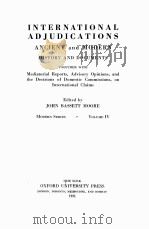
- INTERNATIONAL ADJUDICATIONS VOLUME IV
- 1931 OXFORD UNIVERSITY PRESS
-
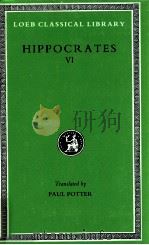
- HIPPOCRATES VOLUME VI
- 1988 HARVARD UNIVERSITY PRESS
-
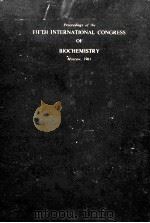
- PROCEEDINGS OF THE FIFTH INTERNATIONAL CONGRESS OF BIOCHEMISTRY VOLUME VI MECHANISM OF PHOTOSYNTHESI
- 1963 PERGAMON PRESS
-
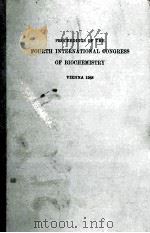
- PROCEEDINGS OF THE FOURTH INTERNATIONAL CONGRESS OF BIOCHEMISTRY VOLUME VI
- 1959 PERGAMON PRESS
-

- METHODS OF BIOCHEMICAL ANALYSIS VOLUME VI
- 1958 INTERSCIENCE PUBLISHERS INC.
-

- THE SCIENCE LIBRARY VOLUME VI
- 1971 COPYRIGHT
-

- THE HAND DIAGNOSIS AND INDICATIONS
- 1977 CHURCHILL LIVINGSTONE
-
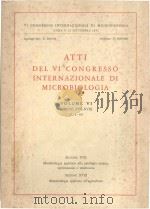
- ATTI DEL VI CONGRESSO INTERNAZIIONALE DI MICROBIOLOGIA VOLUME VI
- 1953 PROPRIETA LETTERARIA RISERVATA
-
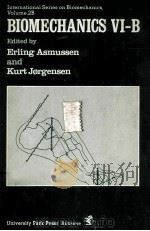
- INTERNATIONAL SERIES ON BIOMECHANICS VOLUME 2B BIOMECHANICS VI-B
- 1978 UNIVERSITY PARK PRESS
-
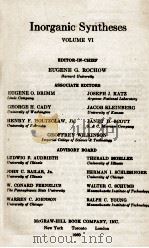
- INORGANIC SYNTHESES VOLUME VI
- 1960 McGRAW-HILL BOOK COMPANY
-

- PHYSICAL ACOUSTICS VOLUME VI
- 1970 ACADEMIC PRESS NEW YORK AND LONDON
-
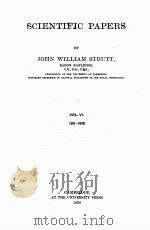
- SCIENTIFIC PAPERS VOLUME VI 1911-1919
- 1920 AT THE UNIVERSITY PRESS
提示:百度云已更名为百度网盘(百度盘),天翼云盘、微盘下载地址……暂未提供。➥ PDF文字可复制化或转WORD

